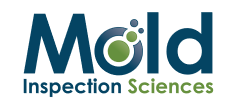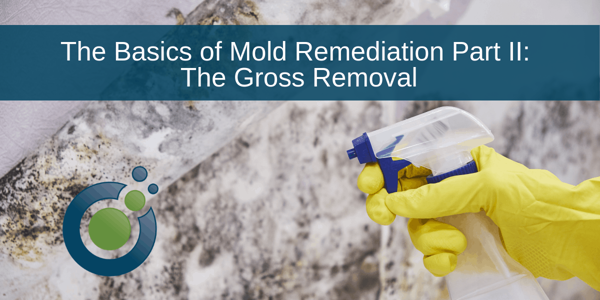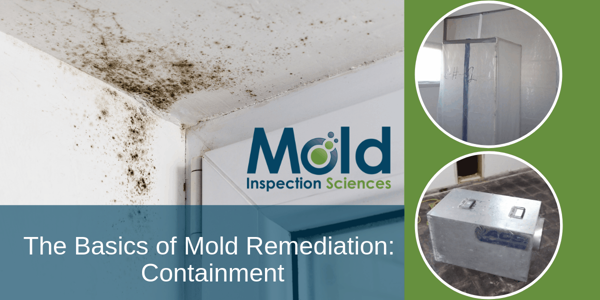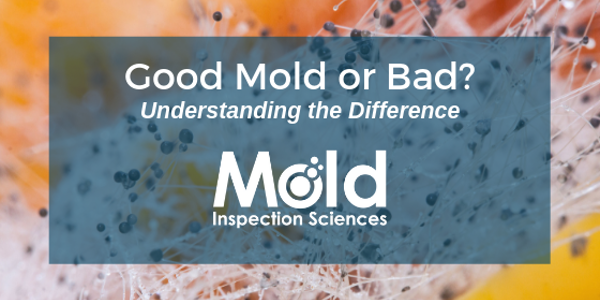The Basics of Mold Remediation Part III
Final Cleaning of the Containment and Affected Areas
If you’re just joining us, welcome! This is part three in our “Basics of Mold Remediation” series.
So far, we have discussed step one, which is isolating the mold impacted area from all non-affected adjacent living spaces. In phase two, we removed the gross affected non-structural materials and cleaned mold growth from all structural elements.
Now, in step three, we will discuss the final cleaning of the affected areas.
Part III of III – Final Cleaning of the Containment and Affected Areas
Now that the nitty gritty portion of the removal has been accomplished, the work area has typically seen a fair share of debris. Not only does the removal of building materials create lots of dust and debris, but the disturbance and removal of the mold source creates vast quantities of microscopic mold spores. So, how do we account for all of those spores that we can’t see with our naked eye? Well, the simple answer is by cleaning, cleaning EVERYTHING. That means every surface (ceiling, walls, floors), every crack, crevice, and cavity must be cleaned - oh not to mention the air must be cleaned too - yes, the air.
HEPA All the Things
The first step in the final cleaning is typically a complete HEPA vacuuming of the entire space. Every surface within the containment area will be HEPA vacuumed to gather any dust, debris, and as much of the mold spores as possible. The vacuums used are not the typical vacuum you can find at the hardware store, but specialized HEPA vacuums that prevent the microscopic spores that are sucked up from being re-distributed back into the space.
Once the area has been HEPA vacuumed, the remediation contractor will typically perform a wet wipe down of the area. Exactly as it sounds, the contractor will use a cloth that is soaked in either an antimicrobial agent or cleaner and wipes down every hard surface in the contained area. The rags are kept wet not only to aid in the cleaning process but to help in picking up mold spores and preventing them from becoming airborne.
At this point, some remediation contractors may choose to repeat the previous two steps, and HEPA vacuum the entire space as well as do another wet wipe to ensure that every surface has been accounted for.
After all, it’s better to be safe than to be sorry, or at least that’s what they say.
Negative, But in a Good Way
During all of the previous cleaning efforts, the remediation contractor will have also kept the HEPA filtered negative air machines running as an extra measure to help pull any airborne mold spores out of the air and into the filtration device. As the cleaning progresses, the airborne mold spore numbers should have been continually getting smaller. However, the quantity of airborne mold spores will typically still be in excess of actual clearance standards. So, to continue cleaning the negative air machines are swapped out for HEPA filtered air scrubbers. Instead of air continually being drawn out of the space and unconditioned air being drawn into it, the air within the space will instead be recycled. As the air is continually pulled through the HEPA filters over and over again, it will become “cleaner” as more and more of those microscopic mold spores are trapped within the HEPA filter. This process is usually continued for a minimum of 24 hours and depending on the amount of contamination in the space may go on for multiple days.
The Final Testing and Clearance
At this point, the remediation project has come a long way. We have gone from a mold contaminated area, to what we hope is considered a “normal” living space. But, to truly verify whether the space has been returned to normal, a Post Remediation Verification Inspection should be performed. This should be performed by an independent mold inspector who has no financial ties with the remediation contractor. They will perform a visual inspection of the space to ensure that all the impacted materials have been removed and cleaned. The inspector will test the moisture content of the building materials to ensure that everything has been adequately dried and ensure that the area has been properly cleaned. If the visual inspection is adequate, then they will perform ambient air sampling of the workspace. This will test for the presence, types, and quantities of mold spores within the space and will be compared to an outdoor sample taken at the same place and time. If the sample is within clearance standards, the project will be considered successful, and the mold remediation project complete. All that is left at this point is the reconstruction of the space to return it to a normal living space. After all that we have gone through, that should be a walk in the park. It’s time to breathe easy.





